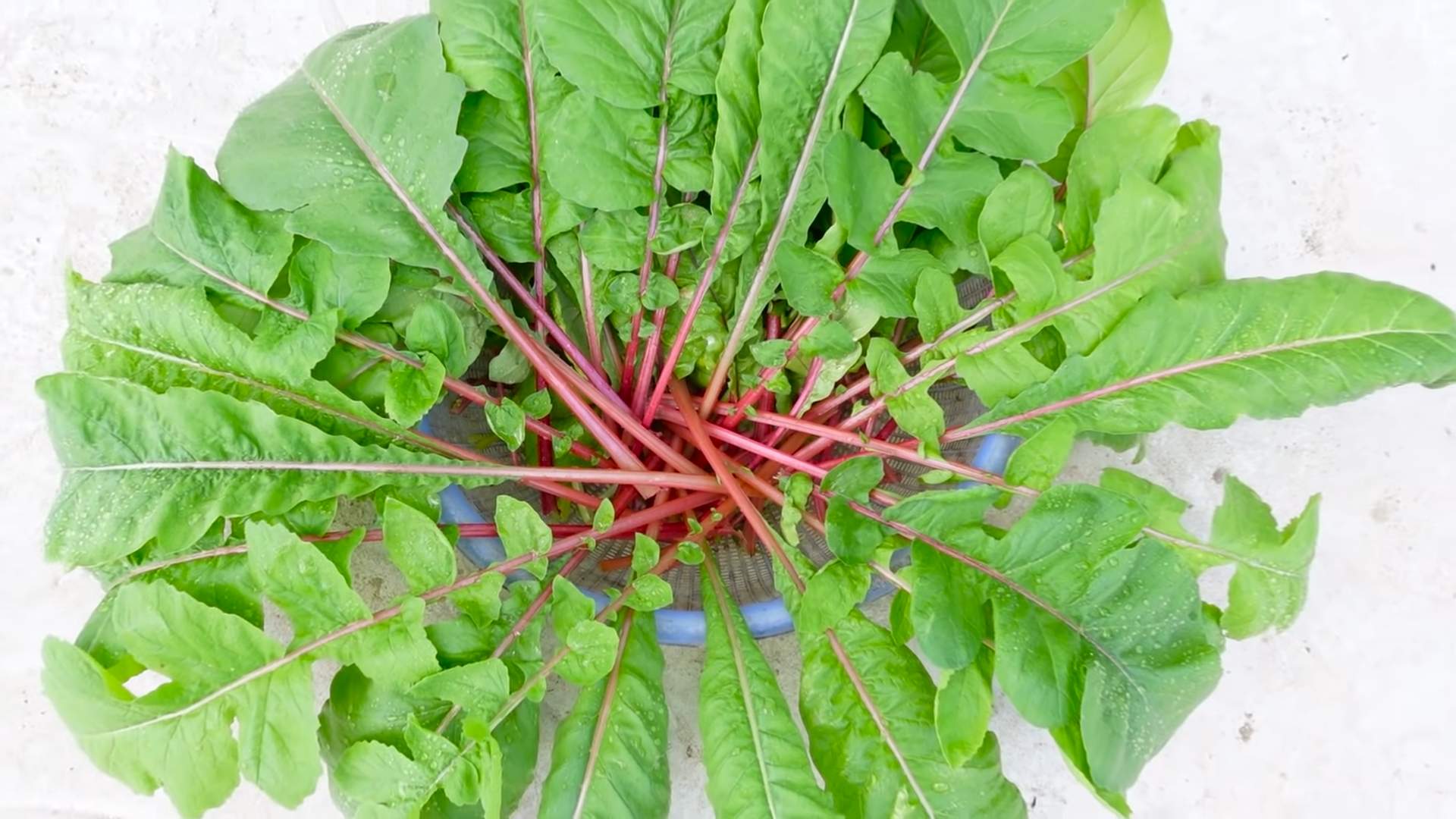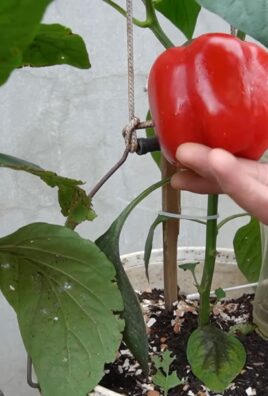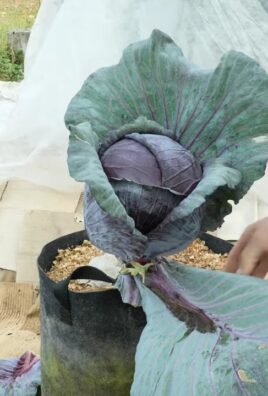Grow your own veggies, even if you think you have a “brown thumb,” is totally achievable! Have you ever dreamed of stepping into your backyard and picking fresh, sun-ripened tomatoes for your salad or snipping fragrant herbs to season your dinner? It’s a truly rewarding experience, and I’m here to tell you it’s easier than you think. For centuries, cultivating our own food has been a cornerstone of human civilization. From ancient Egyptians tending their gardens along the Nile to the “Victory Gardens” of World War II, growing food at home has always been a symbol of self-sufficiency and connection to the earth.
But in today’s busy world, the idea of starting a garden can feel overwhelming. Where do you even begin? That’s where these simple, yet effective, home gardening tricks and DIY projects come in. I’m going to share some of my favorite hacks that will help you grow your own veggies successfully, no matter how small your space or how limited your experience. These aren’t just tips; they’re game-changers that will transform your backyard (or balcony!) into a thriving edible oasis. Get ready to ditch the grocery store produce aisle and embrace the joy of homegrown goodness!

Grow Your Own Veggies: A Beginner’s Guide to a Bountiful Harvest
Hey there, fellow garden enthusiast! Ever dreamt of strolling into your backyard and picking fresh, juicy tomatoes or crisp, vibrant lettuce for dinner? Well, stop dreaming and start doing! Growing your own veggies is not only incredibly rewarding but also surprisingly easy, even if you’ve never touched a trowel before. I’m here to guide you through the process, step-by-step, so you can enjoy the delicious fruits (and vegetables!) of your labor.
Choosing Your Veggies and Location
Before we get our hands dirty, let’s talk about what you want to grow and where you’re going to grow it. This is a crucial step, as it sets the foundation for a successful garden.
* Consider your climate: Different vegetables thrive in different climates. Research which veggies grow well in your region’s growing season. Your local agricultural extension office is a fantastic resource for this information.
* Think about your space: Do you have a sprawling backyard or just a sunny balcony? This will determine the size and type of garden you can create. Container gardening is perfect for small spaces!
* Choose what you love to eat: This might seem obvious, but it’s important! There’s no point in growing kale if you can’t stand the taste. Focus on veggies you and your family enjoy.
* Sunlight is key: Most vegetables need at least 6-8 hours of sunlight per day. Observe your yard throughout the day to identify the sunniest spots.
* Soil matters: Healthy soil is the foundation of a healthy garden. If your soil is poor, you can amend it with compost and other organic matter.
I personally love growing tomatoes, peppers, and herbs. They’re relatively easy to grow and add so much flavor to my cooking.
Preparing Your Garden Bed or Containers
Now that you’ve chosen your veggies and location, it’s time to prepare the soil. This is where the real magic happens!
* Clear the area: Remove any grass, weeds, rocks, or debris from your garden bed.
* Test your soil: A soil test will tell you the pH level and nutrient content of your soil. You can purchase a soil test kit at most garden centers or send a sample to your local agricultural extension office.
* Amend the soil: Based on your soil test results, you may need to amend your soil with compost, manure, or other organic matter. This will improve drainage, aeration, and nutrient content.
* Till or dig the soil: Loosen the soil to a depth of at least 12 inches. This will allow the roots of your plants to grow easily.
* For containers: Choose containers that are large enough for the mature size of your plants. Make sure they have drainage holes. Use a high-quality potting mix, not garden soil.
I always add a generous amount of compost to my garden bed before planting. It’s like giving my veggies a superfood boost!
Planting Your Veggies
Alright, the moment we’ve been waiting for! It’s time to get those veggies in the ground.
* Start from seeds or seedlings: You can start your veggies from seeds indoors or purchase seedlings from a garden center. Starting from seeds gives you more control over the varieties you grow, but seedlings are a quicker and easier option.
* Follow the planting instructions: Each type of vegetable has specific planting requirements. Read the seed packet or plant tag carefully and follow the instructions for spacing, depth, and watering.
* Water gently: After planting, water your veggies gently to avoid disturbing the soil.
* Mulch around your plants: Mulch helps to retain moisture, suppress weeds, and regulate soil temperature. Use organic mulch such as straw, wood chips, or shredded leaves.
I usually start my tomatoes and peppers from seeds indoors about 6-8 weeks before the last frost. It gives them a head start on the growing season.
Step-by-Step Planting Guide:
1. Prepare the planting hole: Dig a hole that is slightly larger than the root ball of your seedling.
2. Gently remove the seedling from its container: Be careful not to damage the roots.
3. Loosen the roots: Gently tease apart the roots of the seedling to encourage them to spread out.
4. Place the seedling in the hole: Make sure the top of the root ball is level with the surrounding soil.
5. Fill the hole with soil: Gently pack the soil around the seedling.
6. Water thoroughly: Water the seedling deeply to help it establish its roots.
7. Add mulch: Spread a layer of mulch around the seedling to help retain moisture and suppress weeds.
Caring for Your Veggies
Planting is just the beginning! To ensure a bountiful harvest, you need to provide your veggies with ongoing care.
* Water regularly: Water your veggies deeply and regularly, especially during dry spells. The best time to water is early in the morning.
* Fertilize as needed: Vegetables need nutrients to grow. Fertilize your veggies every few weeks with a balanced fertilizer.
* Weed regularly: Weeds compete with your veggies for water and nutrients. Remove weeds regularly by hand or with a hoe.
* Pest and disease control: Keep an eye out for pests and diseases. If you spot any problems, take action immediately. There are many organic pest and disease control options available.
* Provide support: Some vegetables, such as tomatoes and cucumbers, need support to grow. Use stakes, cages, or trellises to support your plants.
I like to use a soaker hose to water my garden. It delivers water directly to the roots of the plants, which helps to conserve water and prevent fungal diseases.
Harvesting Your Veggies
The most rewarding part of gardening is harvesting your own fresh veggies!
* Harvest at the right time: Each type of vegetable has a specific harvesting time. Read the seed packet or plant tag to learn when to harvest your veggies.
* Harvest gently: Handle your veggies with care to avoid bruising or damaging them.
* Enjoy your harvest: Eat your veggies fresh, or preserve them by canning, freezing, or drying.
I love the feeling of picking a ripe tomato straight from the vine and eating it right there in the garden. It’s the ultimate taste of summer!
Specific Veggie Tips:
* Tomatoes: Prune suckers (the shoots that grow between the main stem and the branches) to improve air circulation and fruit production.
* Peppers: Harvest peppers when they are fully colored and firm.
* Lettuce: Harvest lettuce leaves as needed, starting with the outer leaves.
* Herbs: Harvest herbs regularly to encourage new growth.
Dealing with Common Garden Problems
Even the most experienced gardeners encounter problems from time to time. Here are a few common garden problems and how to deal with them:
* Pests: Aphids, slugs, and caterpillars are common garden pests. You can control them with organic pesticides, such as insecticidal soap or neem oil. You can also hand-pick pests off your plants.
* Diseases: Fungal diseases, such as powdery mildew and blight, can affect vegetables. Prevent diseases by providing good air circulation and avoiding overwatering. Treat diseases with organic fungicides.
* Weeds: Weeds compete with your veggies for water and nutrients. Remove weeds regularly by hand or with a hoe. Mulch can also help to suppress weeds.
* Poor soil: Poor soil can lead to stunted growth and poor yields. Amend your soil with compost and other organic matter to improve its fertility.
I had a terrible aphid infestation last year. I used insecticidal soap and ladybugs to get rid of them. Ladybugs are natural predators of aphids, so they’re a great organic pest control option.
Extending Your Growing Season
Want to enjoy fresh veggies for longer? Here are a few tips for extending your growing season:
* Start seeds indoors: Starting seeds indoors gives your plants a head start on the growing season.
* Use row covers: Row covers protect your plants from frost and pests.
* Plant succession crops: Plant new crops every few weeks to ensure a continuous harvest.
* Grow cold-hardy vegetables: Some vegetables, such as kale and spinach, can tolerate frost.
I use row covers to protect my tomatoes from frost in the spring and fall. It allows me to harvest tomatoes for a longer period of time.
Container Gardening: A Great Option for Small Spaces
Don’t have a yard? No problem! You can still grow your own veggies in containers.
* Choose the right containers: Select containers that are large enough for the mature size of your plants. Make sure they have drainage holes.
* Use a high-quality potting mix: Don’t use garden soil in containers. It’s too heavy and doesn’t

Conclusion
So, there you have it! Taking the leap and deciding to grow your own veggies is more than just a trend; it’s a rewarding journey that connects you to your food, enhances your well-being, and contributes to a more sustainable lifestyle. We’ve explored a simple yet effective method to get you started, even if you have limited space or experience.
Why is this DIY trick a must-try? Because it empowers you to control the quality of your food, reduce your carbon footprint, and enjoy the unparalleled taste of freshly harvested produce. Imagine biting into a sun-ripened tomato you nurtured from a tiny seed, or adding fragrant herbs to your dishes that you snipped just moments before. The satisfaction is immense, and the health benefits are undeniable.
But the beauty of growing your own veggies lies in its adaptability. Feel free to experiment with different varieties of vegetables that suit your climate and taste preferences. Consider companion planting to maximize space and deter pests naturally. For instance, basil planted near tomatoes can improve their flavor and repel insects. Marigolds are excellent for keeping nematodes away from root vegetables.
If you’re short on space, vertical gardening is your best friend. Utilize trellises for climbing plants like cucumbers and beans, or create a stacked planter for herbs and leafy greens. Container gardening is another fantastic option, allowing you to grow veggies on balconies, patios, or even windowsills. Just remember to choose containers with adequate drainage and use a high-quality potting mix.
For those with more space, consider creating raised garden beds. They offer better drainage, soil control, and accessibility, making gardening easier on your back and knees. You can even build a small greenhouse to extend your growing season and protect your plants from harsh weather conditions.
Don’t be afraid to get your hands dirty and learn from your mistakes. Gardening is a continuous learning process, and every season brings new challenges and opportunities. Embrace the journey, celebrate your successes, and don’t be discouraged by setbacks.
We encourage you to try this DIY trick and experience the joy of growing your own veggies firsthand. Start small, be patient, and most importantly, have fun! Share your experiences with us in the comments below. We’d love to hear about your successes, challenges, and any tips you’ve learned along the way. Let’s create a community of passionate gardeners who are committed to growing healthy food and living a more sustainable life. Remember, every seed you plant is a step towards a healthier you and a healthier planet. So, grab your gardening gloves, get your hands dirty, and start growing!
Frequently Asked Questions (FAQ)
What are the easiest vegetables to grow for beginners?
That’s a great question! Some of the easiest vegetables to grow for beginners include:
* **Lettuce:** It’s fast-growing and can be harvested multiple times.
* **Radishes:** They mature quickly, often in just a few weeks.
* **Spinach:** Another leafy green that’s relatively easy to grow.
* **Green Beans:** They’re prolific producers and require minimal maintenance.
* **Zucchini:** Be prepared for an abundance of zucchini!
* **Tomatoes:** Choose determinate varieties for easier management.
* **Peppers:** Bell peppers and chili peppers are relatively easy to grow in warm climates.
* **Cucumbers:** Provide a trellis for them to climb.
* **Herbs:** Basil, mint, chives, and oregano are all easy to grow and add flavor to your dishes.
How much sunlight do my vegetables need?
Most vegetables need at least 6-8 hours of direct sunlight per day to thrive. Leafy greens like lettuce and spinach can tolerate partial shade, but fruiting vegetables like tomatoes, peppers, and cucumbers need full sun to produce a good harvest. Observe your garden throughout the day to determine which areas receive the most sunlight and plan your planting accordingly. If you don’t have enough sunlight, consider using grow lights to supplement.
What kind of soil is best for growing vegetables?
Vegetables prefer well-drained, fertile soil that is rich in organic matter. A good soil mix should be loose and crumbly, allowing for good aeration and drainage. You can improve your soil by adding compost, aged manure, or other organic amendments. A soil test can help you determine the pH level and nutrient content of your soil, allowing you to make necessary adjustments. Aim for a pH between 6.0 and 7.0 for most vegetables.
How often should I water my vegetables?
The frequency of watering depends on several factors, including the type of vegetable, the weather conditions, and the soil type. Generally, vegetables need about 1 inch of water per week. Water deeply and less frequently, rather than shallowly and often. This encourages roots to grow deeper, making plants more drought-tolerant. Check the soil moisture regularly by sticking your finger about an inch into the soil. If it feels dry, it’s time to water. Avoid overwatering, as this can lead to root rot.
How do I deal with pests and diseases in my vegetable garden?
Prevention is key when it comes to pests and diseases. Choose disease-resistant varieties, practice crop rotation, and keep your garden clean and free of debris. Encourage beneficial insects like ladybugs and lacewings, which prey on common garden pests. Handpick pests like caterpillars and aphids whenever possible. Use organic pest control methods like insecticidal soap, neem oil, or Bacillus thuringiensis (Bt) for more serious infestations. For diseases, ensure good air circulation and avoid overhead watering. Remove and destroy any infected plants to prevent the spread of disease.
Can I grow vegetables in containers?
Absolutely! Container gardening is a great option for those with limited space. Choose containers that are large enough to accommodate the mature size of the plant and have adequate drainage holes. Use a high-quality potting mix, not garden soil, as it’s lighter and provides better drainage. Water regularly and fertilize as needed. Some vegetables that thrive in containers include tomatoes, peppers, herbs, lettuce, and strawberries.
How do I fertilize my vegetables?
Vegetables need nutrients to grow and produce a good harvest. You can fertilize your vegetables with organic or synthetic fertilizers. Organic fertilizers like compost, aged manure, and bone meal release nutrients slowly over time. Synthetic fertilizers provide a quick boost of nutrients. Follow the instructions on the fertilizer label carefully to avoid over-fertilizing, which can damage your plants. Side-dress your plants with fertilizer every few weeks during the growing season.
What is companion planting?
Companion planting is the practice of planting different vegetables and herbs together to benefit each other. Some common companion planting combinations include:
* **Tomatoes and basil:** Basil repels pests and improves the flavor of tomatoes.
* **Carrots and onions:** Onions repel carrot flies, and carrots repel onion flies.
* **Cabbage and rosemary:** Rosemary repels cabbage moths.
* **Beans and corn:** Beans fix nitrogen in the soil, which benefits corn.
* **Marigolds and most vegetables:** Marigolds repel nematodes and other pests.
How do I know when my vegetables are ready to harvest?
The best way to know when your vegetables are ready to harvest is to observe them carefully and check for signs of ripeness. Tomatoes should be fully colored and slightly soft to the touch. Peppers should be firm and have a glossy skin. Cucumbers should be firm and have a dark green color. Lettuce and spinach can be harvested when the leaves are large enough to eat. Root vegetables like carrots and radishes can be harvested when they reach the desired size.
How can I extend my growing season?
There are several ways to extend your growing season, including:
* **Starting seeds indoors:** Start seeds indoors several weeks before the last frost to get a head start on the growing season.
* **Using cold frames or row covers:** Cold frames and row covers protect plants from frost and extend the growing season in the spring and fall.
* **Building a greenhouse:** A greenhouse provides a controlled environment for growing vegetables year-round.
* **Choosing cold-hardy varieties:** Select vegetables that are tolerant of cold temperatures, such as kale, spinach, and Brussels sprouts.




Leave a Comment